Rapid identification of day to day plastics
Introduction
Plastic usage has increased phenomenally over the years due to its various applications like food packaging, water bottles, carry bags, use-and-throw utensils, electronics, household appliances, furniture, etc. Polypropylene (PP), Polyethylene (PE), Polyvinyl Chloride(PVC) and Polyethylene terephthalate (PET) are among the most commonly used plastics. To control plastic pollution, it is crucial to recover different types of waste plastic and reprocess it for reuse. Characterization of various types of plastics plays an important role in this process. Until now, it has been done using various techniques such as IR spectroscopy, chromatography and thermal analysis. Vibrational spectroscopy (using Raman) has an advantage over other techniques as it is rapid and relatively less expensive. Raman spectroscopy, an inelastic scattering vibrational spectroscopy technique, is one of the quickest and simplest ways to characterize plastics, as it does not involve any complicated sample preparation process. In the current study, plastics used in day-to-day life are collected and characterized using Raman spectroscopy.
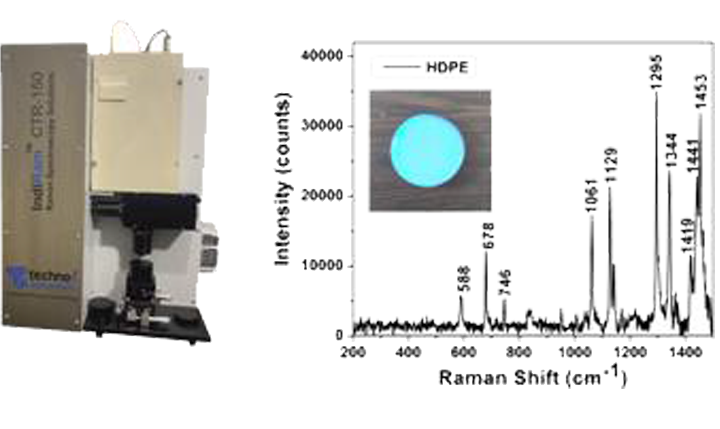
Materials and Methods
Raman spectroscopy experiments were performed using the IndiRamTM CTR-500C Raman spectrometer developed by TechnoS Instruments, Jaipur. A laser excitation of 532nm wavelength at 25 mW power was used, for an exposure time of 5s to excite the sample. Excitation was done 5 times per sample. Water bottle, milk pouch, biscuit wrapper and soyastick wrapper were used as samples in the current study.
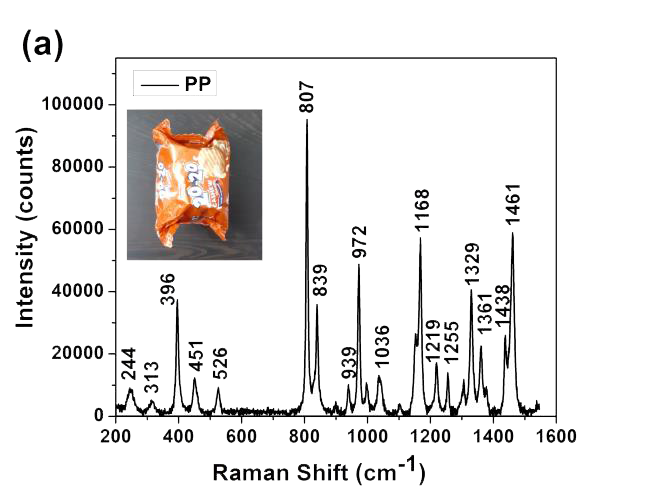
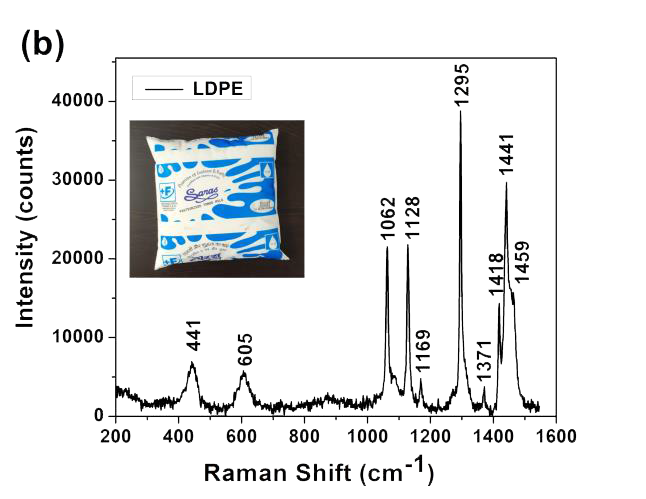
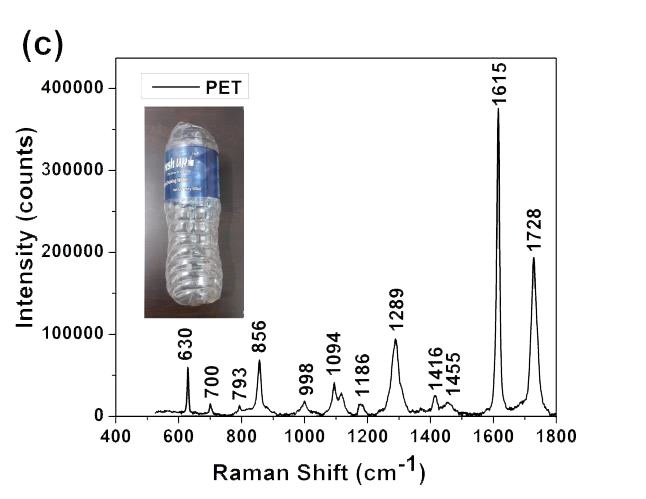
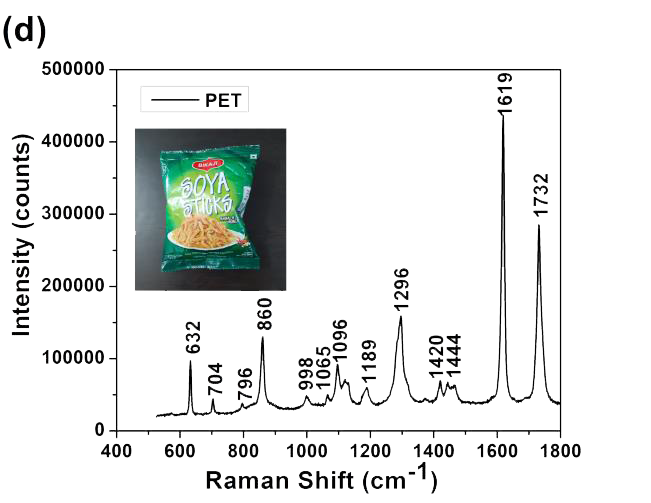
Results and discussion
Figure (a-d) shows the Raman spectra acquired from biscuit wrapper, milk Pouch, water bottle, and soyastick wrapper respectively. Biscuit wrapper has been identified as polypropylene in fig.1 (a) from its characteristic peaks at 810 and 843 cm−1 which are due to CH2 vibrational modes[1]. The peaks at 1062 and 1128 cm−1 in fig.1 (b) from the spectra of milk pouch are due to C–C symmetric and asymmetric stretch respectively in LDPE[2]. CH2 twist mode at 1295 cm−1 and CH2 bending modes are observed at 1418, 1441, and 1464 cm−1 [2]. Raman spectra of LDPE and HDPE are similar,but in literature difference in intensity at 1460 cm-1 peak of LDPE and HDPE has been observed[3]. Strong peak of the Raman spectra from water bottle at 1615 cm−1 in fig.1(c), corresponds to symmetric stretch of benzene ring of PET[4]. The spectra of soyastcik wrapper also found to be PET and it is shown in fig.1 (d). Thus a very quick identification of plastics is made using the Raman spectroscopy which shows the uniqueness and the strength of the technique.
Conclusion
In this application note, the vibration modes of commonly used plastics were quickly identified by using Raman spectroscopy.
Reference
[1] M. Desimone, C.D. Mana, C.J. Perez, J.M. Carella, J.P. Tomba, Applied Spectroscopy, 69 (2015) 1505-1510.
[2] T. Furukawa, H. Sato, Y. Kita, K. Matsukawa, H. Yamaguchi, S. Ochiai, H.W. Siesler, Y. Ozaki, Polymer journal, 38 (2006) 1127-1136.
[3] D.J.d. Silva, H. Wiebeck, Polímeros, 29 (2019).
[4] V.F. Alexiou, G.N. Mathioudakis, K.S. Andrikopoulos, A. Soto Beobide, G.A. Voyiatzis, Polymers, 12 (2020) 2626.

